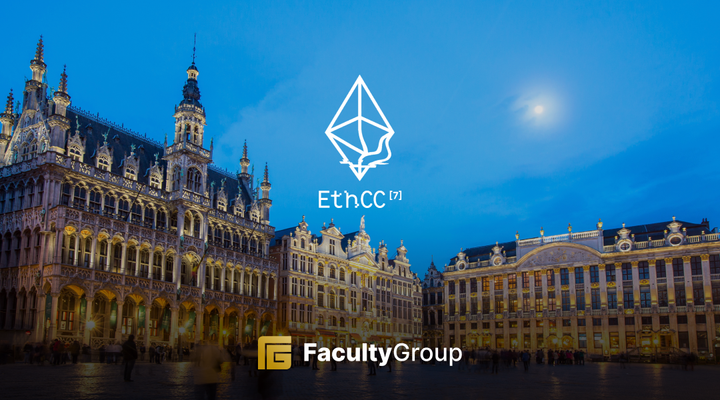Ghost chains are the Misguided Result of a Multi-chain Strategy

The future is multi-chain - or so almost everyone keeps telling us.
Whereas the early days of Web3 were fuelled by blockchain maxis, there are now dozens of leading blockchains competing for their market share today. But are these chains contributing genuine technological and economic value, or are they simply diversifying an already muddled market?
On the one hand specific chains might offer tailored solutions for particular industries or applications, in a drive towards specialisation that helps them stand out from the crowd as well as fostering a competitive environment, potentially driving technological advancements, applications and better user experiences.
But then why do some of the most well-respected blockchains have such little usage? And does this even matter to long-term adoption?
At the most fundamental level, a ghost chain is a blockchain network that has very little, to no real activity going on. This might be scant user participation, or even the presence of ‘ghost’ transactions - designed to give an illusion of activity and network usage.
A 2021 paper produced by Imperial College London analysed three major blockchain networks and noted that only a “small fraction of the transactions are used for value transfer purposes”. The research paper concluded that both transaction volume and token value are highly open to manipulation.
Cardano is the perfect example. Despite being one of the largest Layer 1 blockchains, its low delivery and relatively low network usage led it to being placed in the ghost chain category in 2021.
This may come as a surprise given that Cardano is just about as technically sophisticated as it gets; carefully designed, in principle, to offer unparalleled security, scalability, and sustainability.
Cardano founder, Charles Hoskinson has himself acknowledged the continued delays and network updates over the years, speaking on a CoinTelegraph podcast that this is the result of “betting on the wrong technology and being a bit ambitious with the roadmap”.
Other blockchain networks such as Ripple, Kadena, Near, XDC, EOS, Tezos Fantom, Harmony, Celo (and more) share similar fates.
Is Oversaturation the Result of Hype-Driven Marketing?
The Layer 1 landscape is dotted with increasingly diverse projects—some of which have exhibited sustained development, community growth, and technological advancements, while so many others have faded after an initial burst of attention.
We have seen this time and time again.
Unfortunately, the current system is still mostly self-referential and rife with speculation. Some chains leverage generic value propositions and aggressive marketing during ICOs, prompting scrutiny regarding long-term value and sustainability.
While Bitcoin continues to dominate with an overall percentage market capitalisation of 64.8%, Ethereum has maintained its position as the largest ecosystem- exhibiting steady growth, with a TVL of $19.7b, other previously popular chains such as Fantom and the ones previously mentioned have gradually declined. Of course, some like BNB Chain have exhibited a significant rise in market share; a recent report by the chain provided data that showcased an increase in verified smart contracts from 38% at the beginning of Q2 2023 to 45% by the end of the quarter. But as the study by Imperial College London demonstrates, some numbers in Web3 can be inflated.
Given the ongoing market sentiment, spurred from the series of catastrophic events last year and continuing regulatory challenges, it is no surprise that people are less interested in utilising multiple chains, preferring to stick to a handful of the most well-established chains.
If we are moving away from hype-driven marketing and speculation, new and existing chains will need to focus on trust and visibility. They will also need to provide real-world value.
The Case for a Use-Case-Driven Industry
The burst of smart contract uses in the form of DeFi, GameFi and NFTs undoubtedly contributed to the growth of Web3. Nonetheless, all popular smart contract use cases involve some form of speculation, which becomes unreliable when market conditions worsen.
The chains that are likely to be the most successful in terms of sustained users will need to provide incentives for people to build real-world applications atop their tech stack - focused on producing user-centric applications.
While the industry may be under the guise that it is highly competitive, it is still largely dominated by a couple of chains - namely ETH and BNB. We are also still lacking blockchains that are purpose-made and user-driven. Layer-2 rollups, now Layer 3 solutions and developments are perhaps the most popular chain narratives of the moment, pushing the industry towards a future of specialisation through application-specific networks that offer unique advantages. The infrastructure for custom blockchain apps is in development, but builders and app developers need to start building them for their own custom uses.
Admittedly, in the midst of a bear market where liquidity and market participation are low, the activity of blockchains is also going to be low. What we are seeing is a battle of the chains - those who offer real value will be the chains of the future. This perceived success shouldn’t be determined by inflated numbers - whether that be TXs, volume, or blocks, but rather by the solutions that are provided for real-world issues.
Rather than getting caught up in trying to solve the Blockchain Trilemma or fighting with other chains for market share, the question that we need to ask ourselves is if we really need more chains trying to solve the exact same problems as the existing ones? Shouldn’t we be focusing on a broader adoption strategy, one that uses blockchain to help shape innovation? Blockchain needs to be a means to an end and not the goal in itself. True adoption of blockchain will come when technology meets its purpose.








